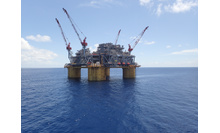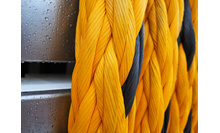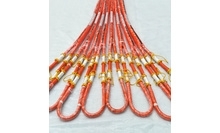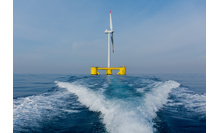
Rigging 101 – Making the most of Heavy Lift Slings, here’s how
30-04-2024Many companies are missing out on the opportunity to maximise the rigging potential of their fibre rope heavy lift slings by using slings at lower nominal design factors than necessary when selecting slings and planning the lift. Lankhorst Ropes and Avient Protective Materials believe there is a better way in their white paper ‘Enhancing Engineered Lifting Reliability with Fatigue Performance’.
Engineering, Procurement, Construction & Installation (EPCI) project teams are confronted with ever larger load requirements. Engineered lifting operations using slings with breaking loads of approximately 3000 - 5500 mt are not uncommon. And these figures are expected to rise to nearly 10000 – 15000 mt within the next decade.
Of course, Lankhorst heavy lift slings are keeping pace with the demand to handle heavier loads, however, this is made more challenging by the offshore industry’s use of lower nominal design factors when selecting slings. It’s understandable. Rigging hardware is commonly limited to strict dimensional requirements which can favour the use of slings at nominal design factors much lower than those prescribed for general-purpose lifts.
Offshore, the situation is made more complicated by the dynamic loading on assets due to interactions with winds and waves during the lifting operation. Conducting a simple break test doesn’t provide adequate data on how the sling will perform. Scaling to ever higher nominal design factors to mitigate these dynamic loading conditions is not practical since synthetic sling suppliers face manufacturing equipment limitations to reach ever increasing rated loading capacities.
Break the Spiral
Breaking this overrating of slings spiral relies on taking a more informed approach to sling rating based on using real world data of an offshore lift combined with fatigue modelling, as described in the ‘Enhancing Engineered Lifting Reliability with Fatigue Performance’ white paper.
The white paper brings together Avient Protective Materials’ DNV-certified fatigue performance model to assess the utility of Dyneema® fibers for specific engineered lifting conditions. And full-scale testing conducted by Lankhorst Ropes on Lanko®Force HL slings made with Dyneema® SK78 fibre and results of a real-world subsea lifting operation with data provided by TechnipFMC.
“In producing the white paper, we’re inviting EPCI project teams to explore how fatigue performance modelling can support the assessment of a sling's lifetime design factor and the development of safe and reliable engineered lifting plans,” says Marcel van der Molen, sales director, Lankhorst Ropes. “We are confident that fatigue performance modelling can enhance the reliability of engineered lifting operations by delivering predictive data to project teams well before the actual lifting operation is performed.”
To download the ‘Enhancing Engineered Lifting Reliability with Fatigue Performance’ White Paper, click here.






